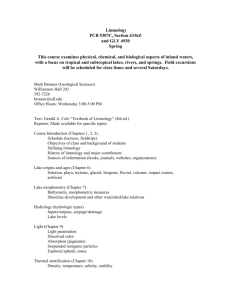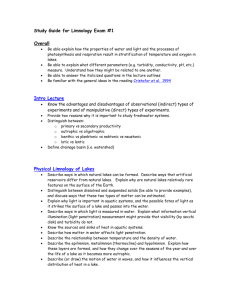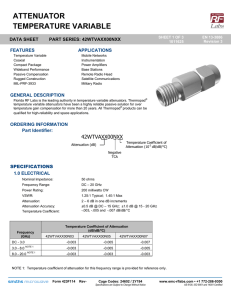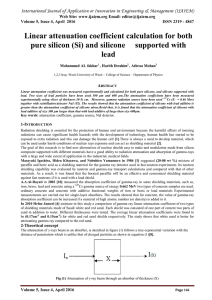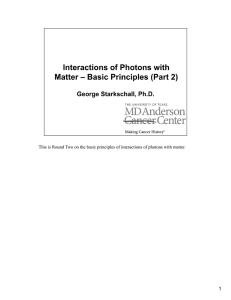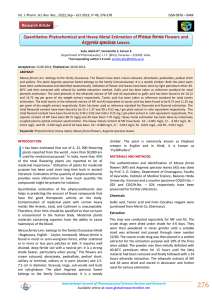Limnology Biology 612 ... 1. For 1 point each, match the numbered term with...
advertisement
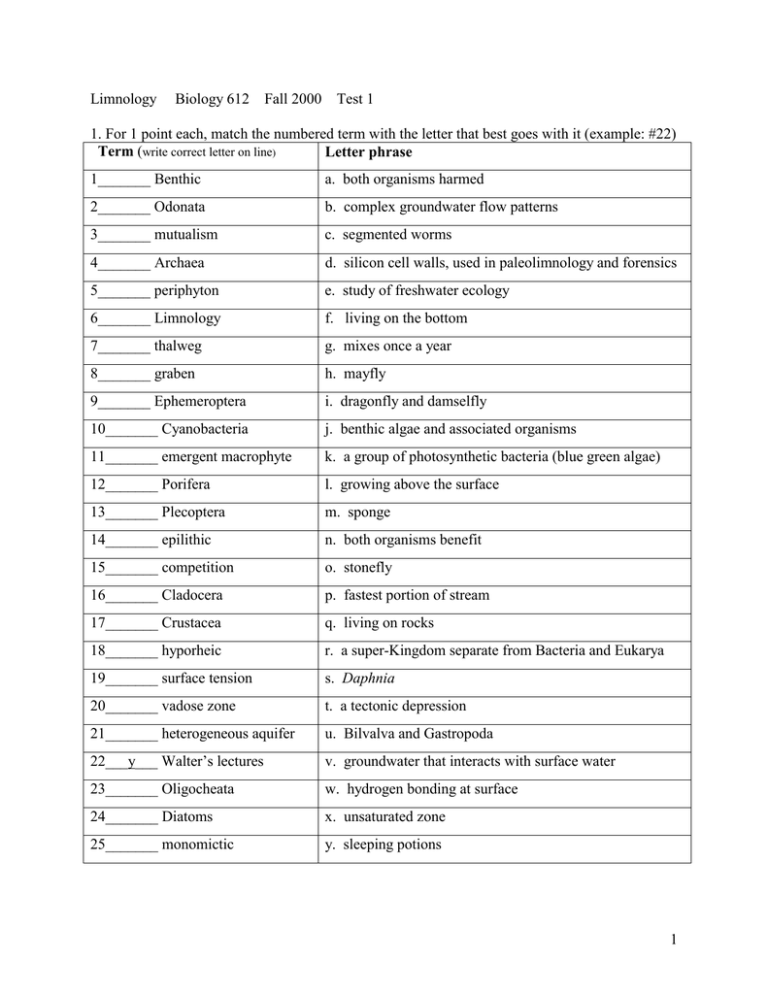
Limnology Biology 612 Fall 2000 Test 1 1. For 1 point each, match the numbered term with the letter that best goes with it (example: #22) Term (write correct letter on line) Letter phrase 1_______ Benthic a. both organisms harmed 2_______ Odonata b. complex groundwater flow patterns 3_______ mutualism c. segmented worms 4_______ Archaea d. silicon cell walls, used in paleolimnology and forensics 5_______ periphyton e. study of freshwater ecology 6_______ Limnology f. living on the bottom 7_______ thalweg g. mixes once a year 8_______ graben h. mayfly 9_______ Ephemeroptera i. dragonfly and damselfly 10_______ Cyanobacteria j. benthic algae and associated organisms 11_______ emergent macrophyte k. a group of photosynthetic bacteria (blue green algae) 12_______ Porifera l. growing above the surface 13_______ Plecoptera m. sponge 14_______ epilithic n. both organisms benefit 15_______ competition o. stonefly 16_______ Cladocera p. fastest portion of stream 17_______ Crustacea q. living on rocks 18_______ hyporheic r. a super-Kingdom separate from Bacteria and Eukarya 19_______ surface tension s. Daphnia 20_______ vadose zone t. a tectonic depression 21_______ heterogeneous aquifer u. Bilvalva and Gastropoda 22___y___ Walter’s lectures v. groundwater that interacts with surface water 23_______ Oligocheata w. hydrogen bonding at surface 24_______ Diatoms x. unsaturated zone 25_______ monomictic y. sleeping potions 1 2. Describe how humans have modified river systems including how urbanization has altered flood hydrographs and frequencies of floods, the effects of channelization, and the extent and hydrological effects of damming (10). 3. Which of the lakes or conditions will lead to a deeper epilimnion? (Circle one of the two after each letter, 1 point each) a. windy spring calm spring b. long fetch short fetch c. abrupt hot spring weather slow warming spring d. small lake in forest small lake in grassland e. high absorption coefficient low absorption coefficient 2 4. Why do you think it is important to study Limnology (5)? 5. Give a general definition of a wetland (5). 6. Draw two graphs with vertical profiles of temperature in a temperate dimictic lake, 30 m deep, one each for winter and summer. Place depth on the y-axis, temperature on the x-axis. Label the three distinct layers in the summer (10). 3 7. Draw or describe the process of meander formation (10). 8. Describe how movement of water varies with scale from milliseconds to centuries, and from 10–6m to continental size scales, a graph is ok here (10). 4 9. Describe how Reynolds number varies with scale and how this is related to changes in viscosity and diffusion (10). 10. Order the attenuation coefficients in each series of conditions (10 points total). 1 = lowest attenuation coefficient; 2 = medium coefficient; 3 = greatest attenuation coefficient oligotrophic lake _______ blue light _______ green light ________red light eutrophic lake _______ blue light _______ green light ________red light All colors of light _______ oligotrophic _______mesotrophic ________ eutrophic All colors of light ________very turbid ________ moderate turb ____few suspended materials all colors of light _____ high tannin _________ moderate tannin ______low tannin* *tannins are colored organic compounds 11. Draw a graph with density of water on the y axis and temperature on the x axis. Label and number both axes (5). 5

